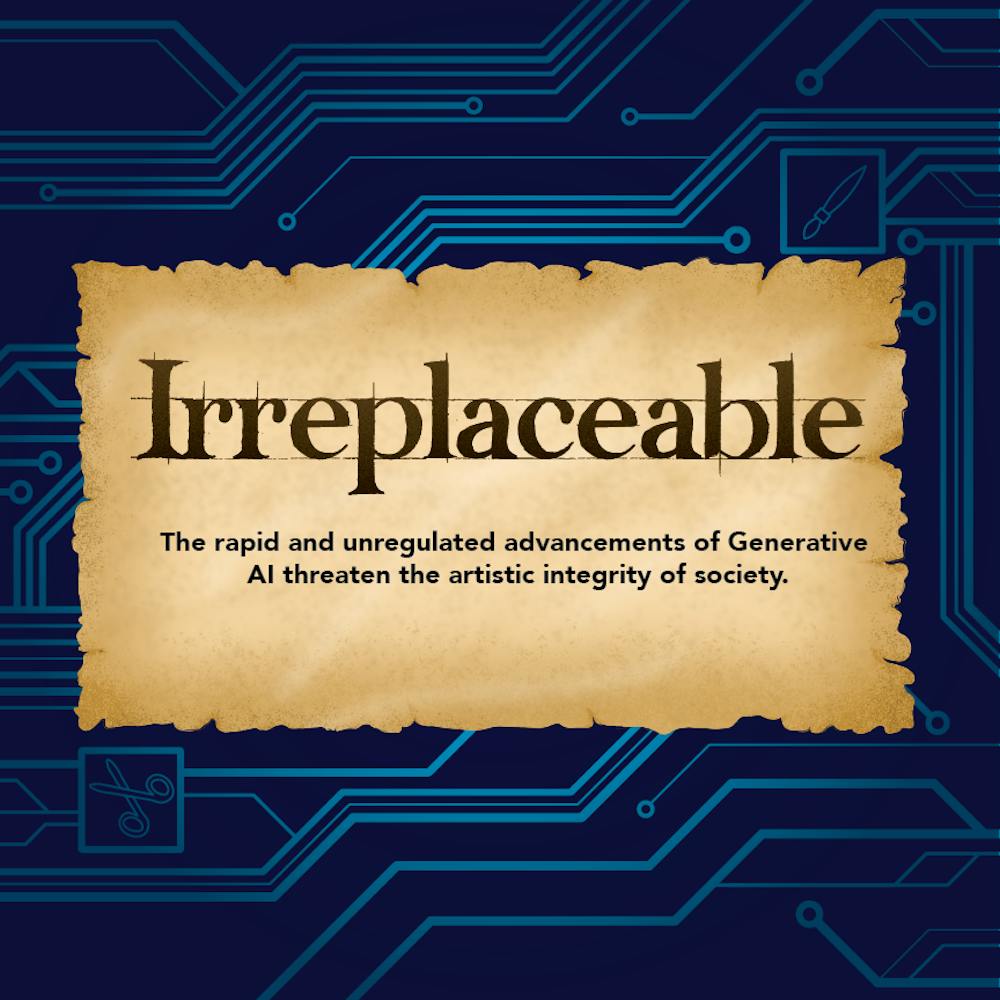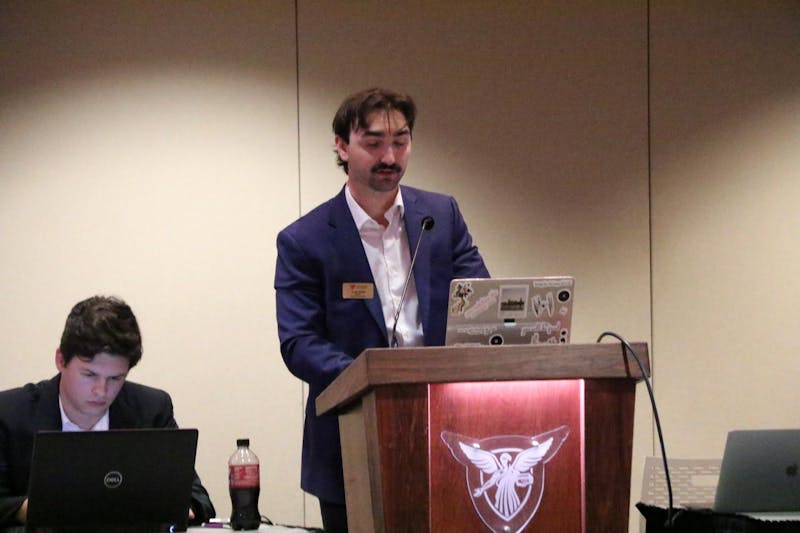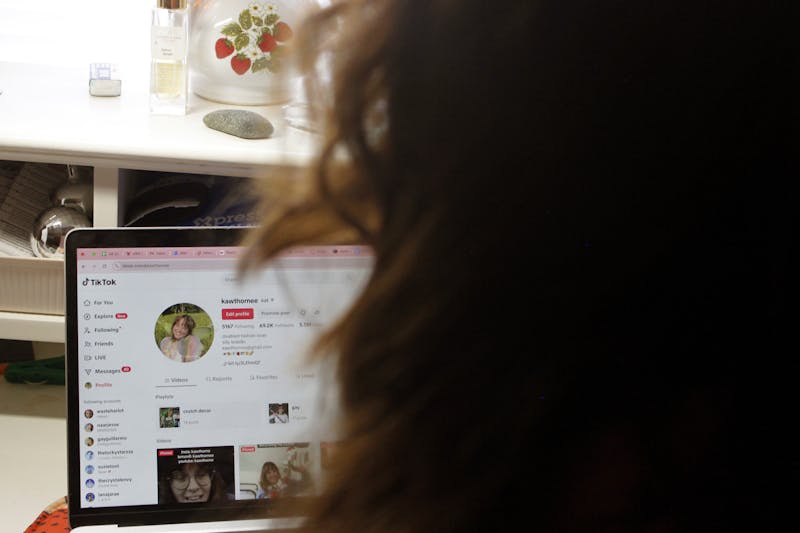Art is a constant in the lives of everyone.
Art is in the clothes you wear, the building you go to work in, the phone you look at — it quite literally surrounds us in every capacity of our lives.
That is what is so beautiful about art — it is universally felt in society. You don’t have to visit an art museum and look at paintings to appreciate art. Art is all-encompassing and moves society.
This is why it is ever more concerning that the unregulated advancements of Artificial Intelligence (AI), specifically Generative Artificial Intelligence (GenAI), are threatening the artistic integrity of society by offering “easy alternatives” to art. In reality, those alternatives are stealing jobs, stealing art, and encouraging the erasure of creative fields of study and work.
I have personally been incredibly moved by art for the majority of my life.
I grew up watching animated shows like most kids do, but I never really outgrew animation as a form of entertainment. Shows like Dora the Explorer and Blue’s Clues melted away and shows like Gravity Falls and Steven Universe became my main forms of entertainment in my teenage years. Now, as an adult, my comfort shows are adult animations like Bob’s Burgers and Smiling Friends.
That love for art extended into a love for artists like Monet, Van Gogh, Keith Haring and Georgia O’Keeffe.
This love has pushed me into a career that is largely creative and art-based, with my absolute dream job being a creative director for literally any company that would take me.
And yet, it wasn’t until I started hearing conversations about an animators strike from artists I have grown to love — like Alex Hirsch, Michael Rianda and Rebecca Sugar — that I learned that there are currently little to no regulations around the use of GenAI in art. GenAI negatively impacts artists in all forms, ranging from music to animation to graphic design.
GenAI is likely what you think of when someone asks you what AI is. It’s the ChatGPTs of AI, the kind where you give a prompt and the AI gives you a response.
It is important to understand that difference because AI isn’t new to us, but GenAI is.
AI is in things like your car navigation system, search engines and apps like UberEats. It’s required for technology to advance and is debatably less harmful than GenAI.
When you type in a prompt like “Give me a picture of a cat on the first day of school” or run a selfie through a filter to see how you would look in 1800s England, you probably don’t know that AI is stealing from the work of other artists to produce this AI art.
Artists such as Sarah Anderson, Kelly McKernan and Karla Ortiz have filed suits against popular GenAI companies, sourcing that the “training” that companies feed their AIs are stealing works and training AIs to copy and mimic their work. At the very least, these companies are making and storing copies of artists' work without permission.
While a lot of these cases don’t yet have a conclusion or decision, the concern artists are sharing is a call to consider regulation and reform. The call isn’t coming from just artists, as executives have admitted to cutting artists’ jobs, or at the least considering cutting jobs, in favor of AI.
The Animation Guild created a task force to monitor the use of AI and consider how areas of AI can fit into future studio negotiations.
The union’s task force surveyed 300 C-Suite leaders, senior executives and mid-level managers across six key entertainment industries in the winter of 2023 to gain an understanding of where the entertainment industry is going with GenAI.
75 percent of survey respondents indicated GenAI tools, software and/or models had supported the elimination, reduction or consolidation of jobs in their business division.
75 percent of executives and managers agree that GenAI is creating the elimination and reduction of art and creative jobs.
The same survey found that 47 percent of business leaders felt that over the next three years, GenAI will be effective in generating 3D assets, as well as realistic sound design for film, television and video games.
Another 44 percent believed GenAI would be able to generate realistic and convincing foreign-language dubbing for film and television dialogue, and 39 percent believed GenAI would be generating music mixes and masters by 2026.
Those are hundreds of jobs potentially replaced by AI.
The real knife-in-the-back is that it is likely the work of artists being used to train these AIs. Their work would be used to create the computer systems that would one day replace them — and they wouldn’t have a say in it.
In my many public relations, advertising and graphic design classes I have had teachers tell me not to bother learning how to write blog posts in AP style or create social media design posts because one day AI will do it for me.
I am being encouraged to not learn and to opt for the easy solution. I cannot stress enough how upsetting this is to me.
I am being told by the teachers who are supposed to be preparing me for my future that I will not have a job because of AI’s ability to replace my job and should therefore give up now and learn how to operate AI.
To be fair, I do support the continuing advancements of AI. I see where AI can be beneficial, especially for work in search engines, digital assistants, geo-targeted advertising, etc.
Regardless, it is incredibly disheartening and upsetting to be encouraged to use AI to replace more artistic and creative work like graphic design and copywriting in my classes.
This is not a mythical idea that could be happening in the next three to five years — it’s happening now.
A simple search on social media would show you dozens of examples of big-box stores selling art that is AI-generated. We can tell it’s made with AI because we can see the extra fingers, misplaced hands and missing toes.
I will always argue AI cannot and will not ever replace the work of a human being. Human creativity is irreplaceable.
Without the creativity of artists whose art is being fed to AI interfaces, there would be no AI art.
AI will never be able to achieve the work of artists. It will never be able to capture the humanity and vulnerability that goes into works of art.
It poses a threat to the creative professionals that we need as a society.
Currently, there is little to no legislation or regulation around the use of GenAI, AIs or the use of artists’ work utilized in training.
To anyone who reads this and feels compelled to engage in the democratic process of protecting the work of artists — and ensuring aspiring creatives like myself can have a job — please contact your local legislators and politicians to ask what they plan to do to encourage conversations around AI regulation as it continues to advance.
If you feel so inclined, engage in the works of creative unions like the Animators Union, SAG-AFTRA, National Writers Union, Writers Guild and so many more to learn how you can ensure the work and voices of creatives aren’t left out of the conversation.
Contact Olivia Ground via email at olivia.ground@bsu.edu.





The Daily News welcomes thoughtful discussion on all of our stories, but please keep comments civil and on-topic. Read our full guidelines here.